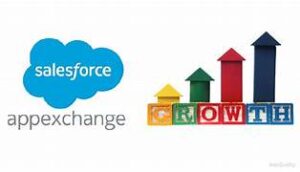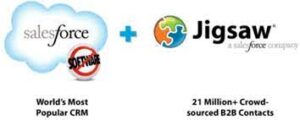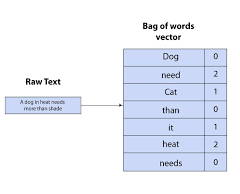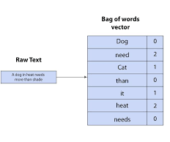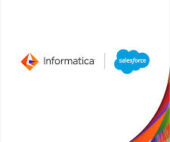Essential Ecommerce and Digital Experience Terminology
The world of ecommerce and digital experiences is constantly evolving, bringing with it a steady stream of new buzzwords and concepts. While this list isn’t exhaustive, it serves as an excellent introduction to some of the latest trends and terminology shaping online shopping experiences.
Accessibility
Ensuring that web content is accessible across all devices is only part of the equation—compliance with international regulations is crucial to supporting individuals with disabilities. Here are key terms related to digital accessibility:
- WCAG (Web Content Accessibility Guidelines): A globally recognized set of criteria that outline how web content can be made accessible, particularly for individuals with visual impairments. Many international laws incorporate WCAG standards.
- VPAT (Voluntary Product Accessibility Template): A document outlining how an ICT (information and communications technology) product complies with Section 508 of the U.S. Rehabilitation Act. The latest VPAT versions also account for WCAG and European EN 301 549 standards.
Content Marketing
Content marketing has evolved beyond catalogs and newsletters. It’s now an integral part of the shopping experience, helping customers discover and engage with brands in meaningful ways.
- Product Discovery: The process a shopper undergoes before finding products of interest. Online, this mimics the experience of window shopping and is often enhanced through influencer marketing, online catalogs, and engaging videos.
- Visual Commerce: The use of high-quality images, videos, user-generated content, and augmented reality to create immersive shopping experiences.
- Shoppable Content: Interactive images and videos tagged with direct purchase links, reducing friction in the buying process and enhancing convenience for shoppers.
Data-Driven Strategies
Leading brands leverage data-driven ecommerce to deliver personalized, seamless shopping experiences. This ever-evolving space includes key concepts such as:
- A/B Testing: Comparing user engagement between two versions of web content to determine which performs better in driving conversions.
- DMP (Data Management Platform): Collects and organizes anonymous user data (e.g., cookies, devices) for businesses to analyze customer behavior.
- CDP (Customer Data Platform): Unlike a DMP, a CDP collects both anonymous and identifiable user data, offering a more complete view of customer preferences and behaviors.
- Hyper-Personalization: Utilizing real-time behavioral data to deliver highly tailored product recommendations and experiences.
Mobile Commerce
Consumers expect to shop seamlessly across multiple devices. Mobile commerce trends ensure a smooth experience, no matter where they browse.
- Mobile-First Design: Prioritizing mobile-friendly layouts ensures a consistent experience across devices.
- Augmented Reality (AR): Superimposing digital elements onto real-world environments, widely used in industries like fashion, home decor, and automotive.
- Messenger/Chatbots: AI-driven chatbots streamline customer interactions, providing quick responses and personalized assistance.
Omnichannel Experiences
Shoppers today expect a cohesive experience whether they shop online, on social media, or in-store. Here are key omnichannel concepts:
- Digitally Influenced Sales: Purchases made in physical stores that were influenced by online research, such as product reviews or videos.
- ROPO (Research Online, Purchase Offline): Shoppers research online before making an in-store purchase. [Read more about ROPO here.]
- DOPO (Discover Online, Purchase Online/Offline): Early-stage browsing experiences that drive eventual purchases, whether online or in-store.
- BOPIS (Buy Online, Pickup In-Store): A popular fulfillment method offering customers the flexibility of purchasing online and retrieving orders in person.
- DNVB (Digitally Native Vertical Brands): Brands that originated online and maintain control over their products, marketing, and customer experience.
Tech & Digital Experience Platforms
To meet changing consumer expectations, retailers are adopting advanced technologies that streamline operations and enhance user experiences.
- Headless Commerce: Decouples the frontend and backend of an ecommerce system, allowing businesses to update the customer-facing experience without disrupting core functionalities.
- DXP (Digital Experience Platform): An evolution of CMS (content management systems), DXPs provide a unified ecosystem for delivering personalized digital experiences. [Learn more about DXPs here.]
Social Commerce
Social commerce enables direct purchases through social media platforms, streamlining the shopping journey from discovery to checkout.
- Influencers: Individuals with authority in a niche who impact consumer purchasing decisions through social media content.
- UGC (User-Generated Content): Content created by users rather than brands, including images, reviews, and videos. UGC fosters authenticity and builds consumer trust.
Security & Privacy
Data privacy is a growing concern among consumers. Here are key regulations shaping ecommerce security:
- GDPR (General Data Protection Regulation): The EU’s stringent digital privacy law, requiring transparency and user consent for data collection.
- CCPA (California Consumer Privacy Act): A U.S. regulation granting California residents greater control over their personal data.
Search
Search functionality is crucial for delivering relevant results and optimizing user experience. Emerging trends include:
- AI-Powered Search: Uses real-time behavioral data to refine search results and enhance personalization.
- Visual Search: Leverages computer vision and machine learning to enable image-based searches.
- Voice Search: Allows users to conduct searches using spoken commands, commonly used in smart speakers and mobile devices.
Final Thoughts
The ecommerce webscape is always changing, with new technologies and trends shaping the way consumers shop online. By staying abreast of these key terms, businesses can enhance customer experiences and remain competitive in the digital marketplace.
Explore these topics further with our resources and insights!


